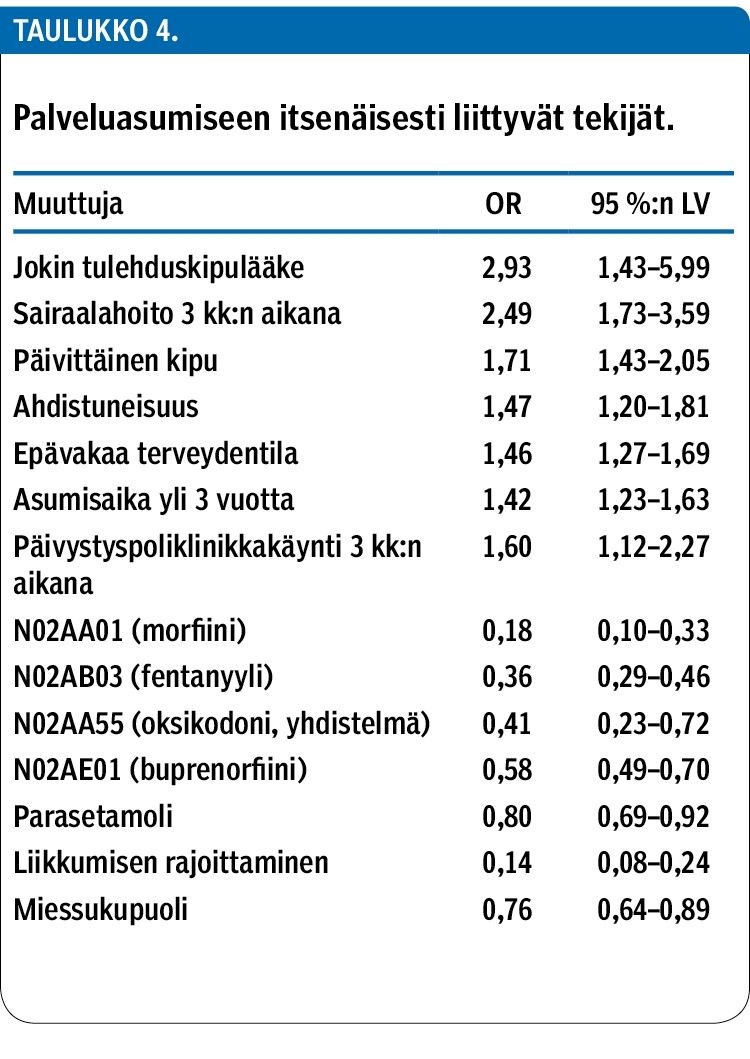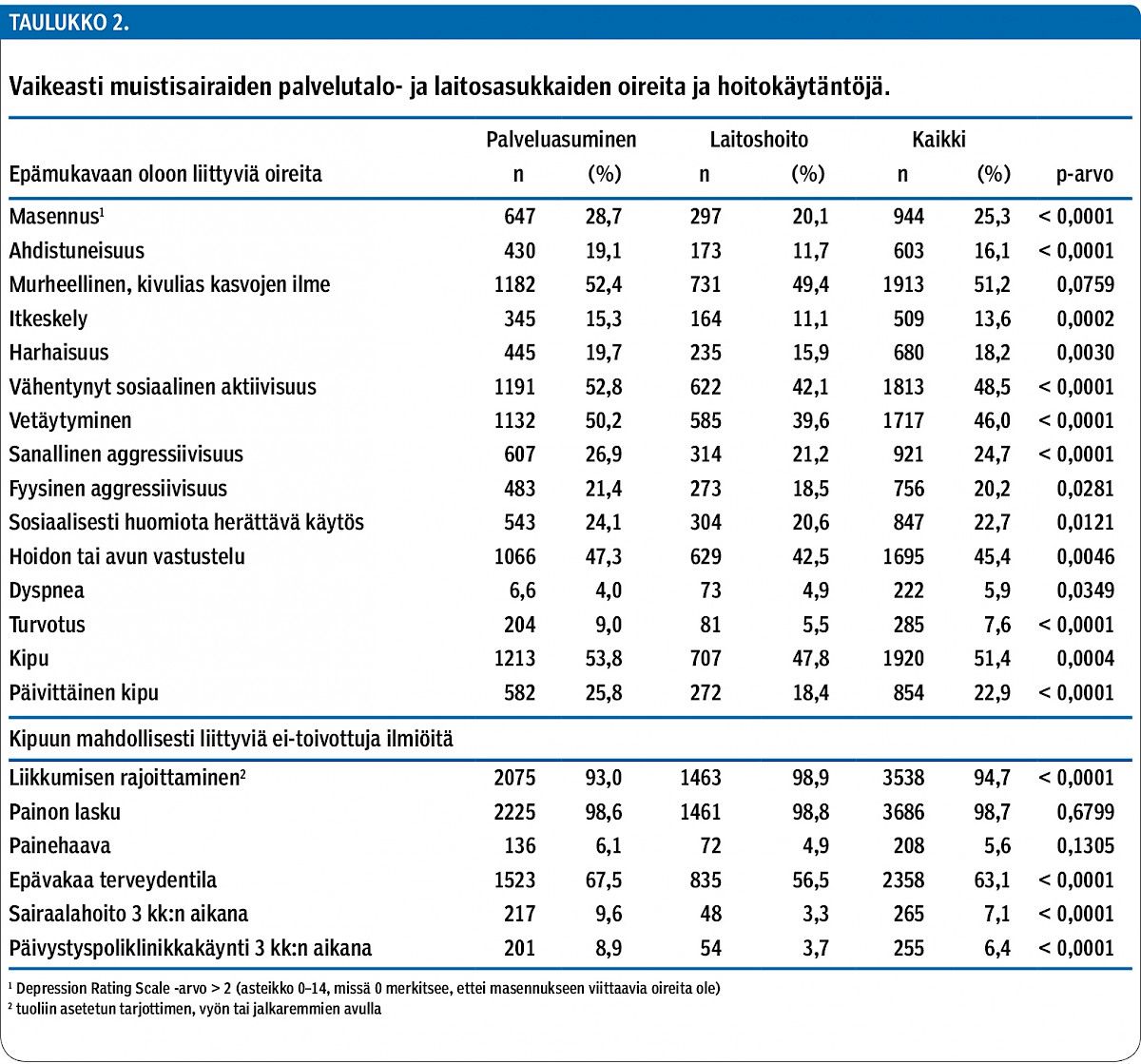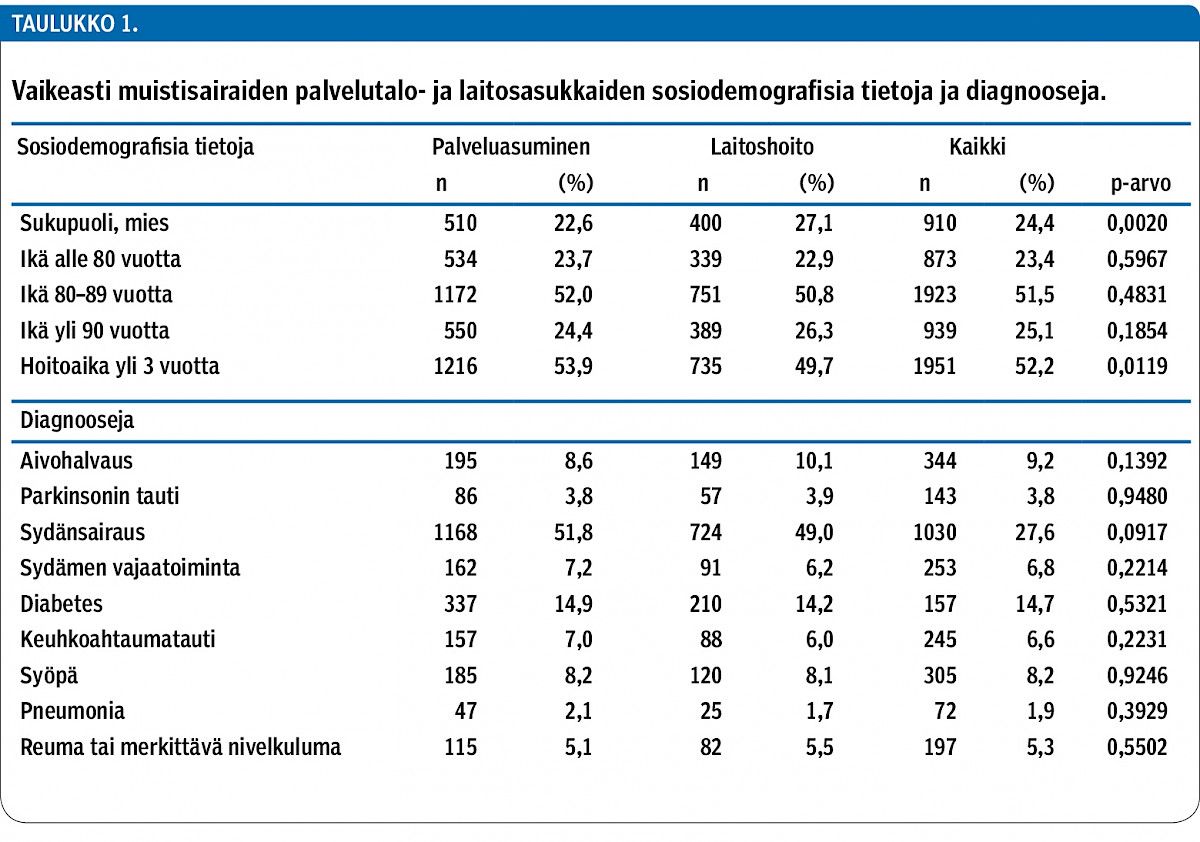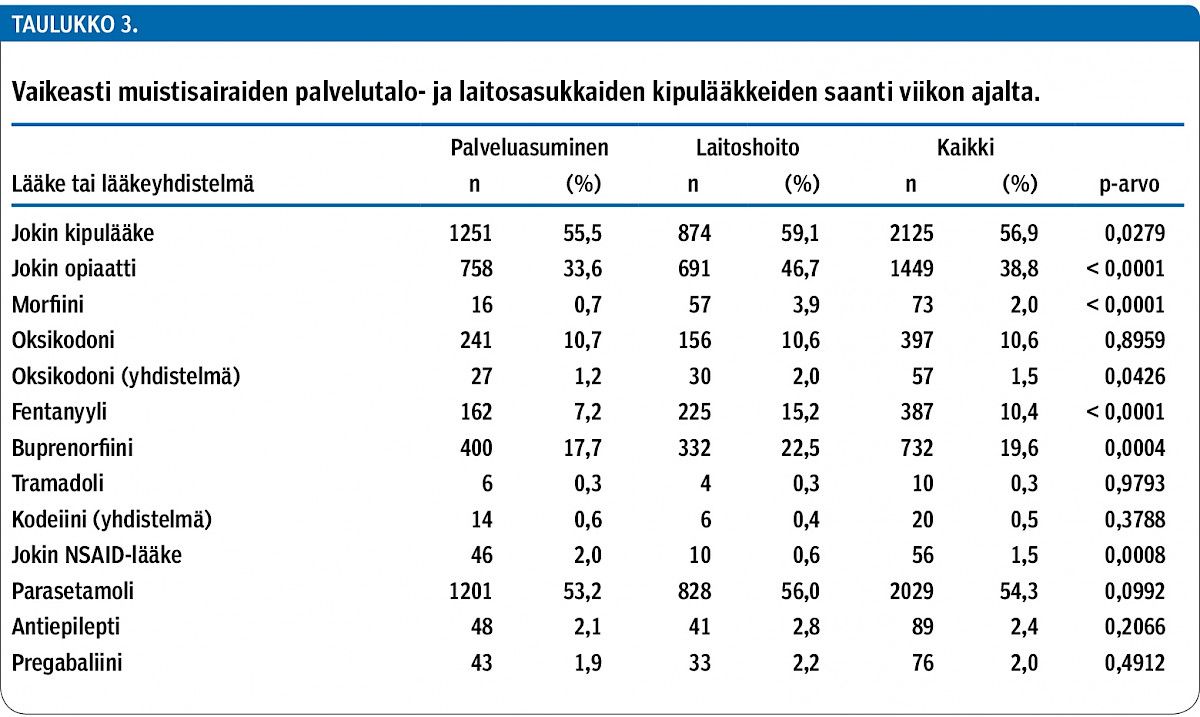Pain management of dementia patients worse in service homes than in institutions

Background
In Finland, institutional long-term care is rapidly decreasing, due to elderly care legislation that came into force in 2013. Those older people who cannot live at home any more move to service homes, where resident-to-nurse ratios and skill mix are lower than in long-term care facilities (LTCFs). We investigated outcomes of pain management in residents with advanced dementia in service homes and compared them to similar residents in LTCFs.
Methods
From the national RAI database, in the Institute of Health and Welfare, we extracted a sample of 3735 residents residing in either service houses (n = 2256) or LTCFs (n = 1478) between October 1st 2015 and March 31st 2016. These individuals were aged 65 or over and suffered from advanced dementia together with functional decline. This sample originated from 102 municipalities and 978 units. In addition to age and sex, the sample included diagnoses, health status, pain, and symptoms often seen in people with advanced dementia and pain, e.g. anxiety, depression and behavioural problems. Furthermore, use of pain medications and acute care services was recorded. To test the associations, Chi square tests and logistic regression analyses were used.
Results
Residents in the service homes expressed significantly more often pain, depression, anxiety, crying, delusions, hallucinations, decreased social interaction, withdrawal, and behavioural problems (e.g. aggression, socially inappropriate behaviours and resisting care) than residents residing in LTCFs. Moreover, the health status of the residents in service homes was more often unstable with symptoms such as oedema, and dyspnoea. The use of acute care services in service home residents was more than double compared to the residents in LTCFs. Use of pain medications was common. However, in the service homes, use of particularly strong opioids was lower than in LTCFs.
Conclusions
Lower resident-to-nurse ratios and skill mix may save money in service homes. However, this is accompanied by a disproportionate shift of the cost burden to acute care and at the same time leads to suffering of the most vulnerable residents.

















